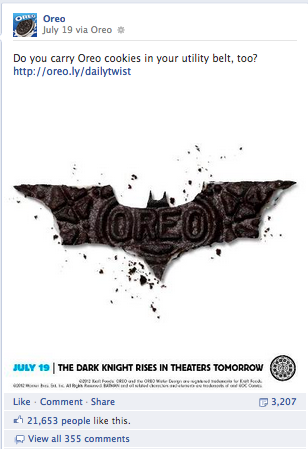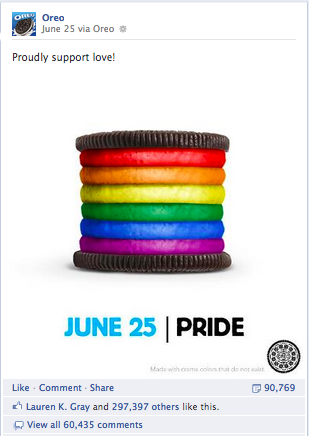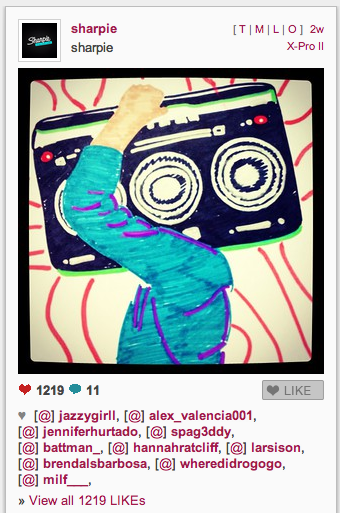By know, we’ve all heard the news: Social media is all about visual storytelling.
Facebook’s relatively new Timeline changed the game in terms of sharing visuals on the popular platform.
Infographics have completely taken over the Web–OK, that might be a little extreme, but it seems like I can’t go two clicks without seeing one now.
Pinterest completely blew up earlier this year, and continues to drive significant traffic to company Web sites.
And Instagram continues to climb the social media charts as one of the hottest social apps in terms of company usage.
Now, think about what all this means for the average community manager at companies across the country/world?
It means these people need to have a keen eye for design and photography.
Sound familiar?
I’ll tell you what it reminds me of: An art director.
This is a bit odd for us old PR folks. Art direction? That’s for the designers. We don’t do that.
You do now. At least if you want to survive–and thrive–in the socia media world.
What am I talking about? Consider the following scenarios:
* Look what Oreo is doing with Facebook. They’ve taken their status updates and completely art directed them. Taking the simple concept of playing on newsworthy events and designing around that. For Oreo, that means designing an image that works with the event–and then creating a headline that goes with that image. Sounds like an advertisement, doesn’t it? And that’s exactly what it is–it’s advertising copywriting/art direction 101. And it’s taking over Facebook.
* Look what Sharpie is doing with Instagram. Maybe the most obvious case–Sharpie is simply drawing photos with its own pens! Simple–but brilliant. But it involves creative art direction. Now, the social folks at Sharpie may not be actually doing the drawing in this case, but they’re certainly working with the designers who are drawing these pics and writing the headlines to accompany them. That’s building an ad. See above.
* Look what Major League Baseball is doing on Facebook. MLB is smartly taking advantage of one of its biggest assets–the fantastic photography they grab at every ballgame every day. Pair that with some quippy headlines and you have instant Facebook content–and more importantly, Facebook content that engages. Sounds simple, but someone at MLB is sifting through hundreds (I’m guessing) of photos each day to find these nuggets, then pairing those with brilliant headlines. Again, it’s advertising copywriting–and it’s making it’s way into social big time lately.
So, since this clearly seems much more like a trend than a mirage, what can you do to start thinking like an art director–or to start gathering visual assets that will work across multiple platforms? A few quick tips:
* Get smarter about photography. Take a class at a local university. Or, better yet, stop by a local camera store and see if they have a class. Community ed, even. If you don’t have a natural eye for photography (not many do), try to develop one. It will be a HUGE advantage for you.
* If you can’t take your own photos, find someone who can. Research local photogs and find one with a style that matches your brand. Then, work with them to capture compelling images that will work for Facebook, Pinterest, Instagram and your blog. Well worth the investment.
* Mine existing resources. What do you have in your internal archives? Search hard. You have have historical photos that could work. You might have a huge stash of photography that the marketing team uses often. Or, your CEO’s admin might have a great stash of images from prior years that no one has seen. Look hard and gather every existing photo and image you can find before going external or on your own.
Make no mistake about it, the visual nature of social communications is here to stay. What are you doing to keep up?





0 Comments